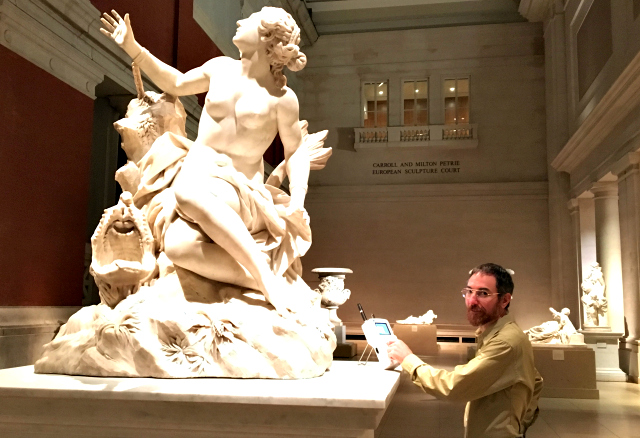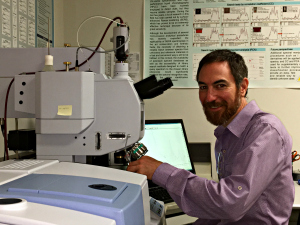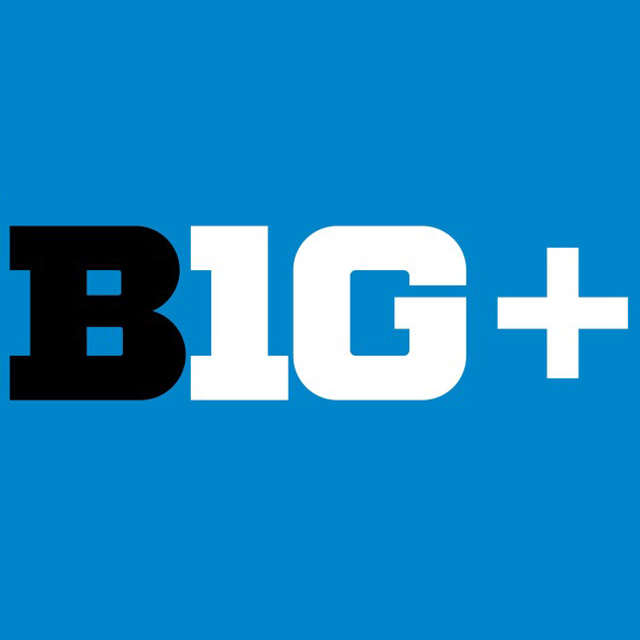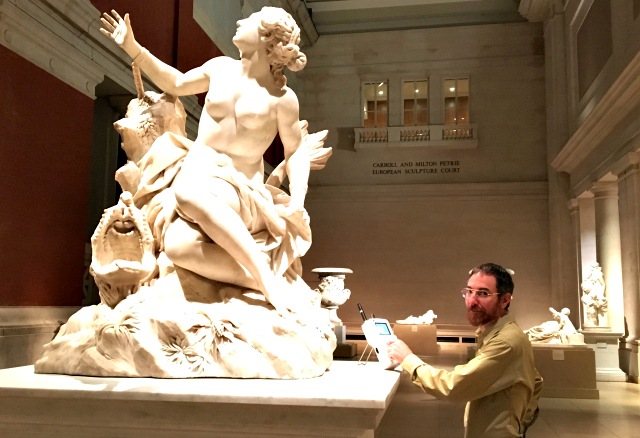John Tolley, August 8, 2016
For Dr. Eric Breitung every day is about art.
That?s something most chemists don?t get to say.
But as a member of the Department of Scientific Research at The Metropolitan Museum of Art in New York, Breitung uses science to tackle the many problems that befall a modern museum.
?In graduate school, I was always friends with a lot of the artists in the MFA program,? says Breitung, a graduate of the University of Wisconsin. ?I also participated in an exhibition exploring flight and clouds at the Student Union at the UW with an artist and a physicist. So, [art] had already been in the background for a while.?
But, as is usually the case, he didn?t find his current calling right out of school. Drawing on what he?d learned in the Wisconsin lab of Dr. Robert McMahon, Breitung found himself in the hallowed halls of General Electric's polymer research lab. It was during that stint at GE that Breitung had his first taste of museum work.
?I volunteered to produce a hands-on interactive exhibit focusing on light and sound waves for the [Schenectady] Museum using a small grant from General Electric,? recalls Breitung. The exhibit was a departure from what he was working on by day, but it gave Breitung his first taste of applying practical science to the world of modern museums.

Already contemplating a move to the Big Apple, Breitung was intrigued by a job listing he read in trade journal Chemistry & Engineering News; it was for a position at the Metropolitan Museum of Art. Unfortunately, Breitung found that, despite his superior CV, hiring him was hard for the Met to justify due to his lack of formal museum experience. He wasn?t dissuaded, even if that meant starting at square one in this new field.
?I basically said, ?How do people get experience,? and he said, ?Fellowships and internships are the primary way,?? remembers Breitung. ?So I proposed taking a yearlong fellowship they offer.?
 Accepted to the fellowship, Breitung found himself applying many of the same skills he had learned in his decade at General Electric to his work in the museum space. But, instead of perfecting scratch-free polycarbonate car windows, he was figuring out how to preserve face-mounted photographs.
Accepted to the fellowship, Breitung found himself applying many of the same skills he had learned in his decade at General Electric to his work in the museum space. But, instead of perfecting scratch-free polycarbonate car windows, he was figuring out how to preserve face-mounted photographs.
?Face-mounted photographs are where you take a chromogenic print and you glue it to a big piece of Plexiglas,? explains Breitung. ?So it sort of protects the print in some sense because no longer can you scratch the front of the print. But if someone is cleaning the print or walks by and nicks it, you have this perfectly flat piece of Plexiglas that now needs to be repaired. So, I was looking at ways of producing those prints that might allow for either a sacrificial layer on the surface, or a more scratch resistant Plexiglas or polycarbonate.?
From that fellowship, Breitung would move to the Smithsonian?s Freer Gallery where he used high-pressure liquid chromatography to help identify intricately-patterned Ikat textiles. He was accepted as a senior conservation scientist at the Library of Congress where he developed triage methods for degraded audio and visual tapes as the Library converted its audio recordings to digital media files. During his time at the Library of Congress, he began to work in preventative conservation, a field of study assessing what materials are safe to use around museum and archive collections.
Since 2015, Breitung has been back with the Met managing preventative conservation on an institution-wide scale. His area of expertise includes everything from materials analysis to environmental monitoring to pest identification, which he readily acknowledges is worlds apart from his former life as an industrial chemist. Because of that, Breitung exhorts young scientists to keep their minds open to the possibilities that exist.
?If people see where they can contribute, there is often a way and a need,? he notes. ?There is often someone out there who will hire you to do that thing, but the hardest thing is to figure out what you?re exceptional at. I think that internships and fellowships are one of the best ways to get brief experiences that give you a little viewing glass into other professionals? lives. Undergrads really should be seeing what a day in the life looks like.?







 WATCH LIVE: Conference tennis championships for men and women.
WATCH LIVE: Conference tennis championships for men and women. 